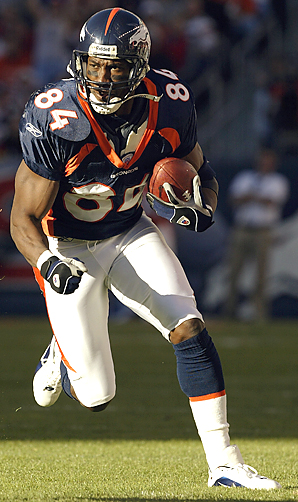Hall of Fame voting never easy -- given the backlog of great players
Within 30 seconds of me Tweeting the selections, someone responded by calling the choices despicable. It's beyond me how anyone could associate that word with a group comprised of running back Marshall Faulk, cornerback Deion Sanders, defensive end Richard Dent, tight end Shannon Sharpe, NFL Films founder Ed Sabol, and seniors picks, linebackers Chris Hanburger and Lee Richter.
Then again, the person wasn't alone. At least a dozen other critical comments were forwarded to me because I'm one of the 44 voters on the selection committee.
Rather than try to defend the choices -- which don't require defending, in my opinion -- let's do this. I'll give you the list of 15 modern-era finalists, and I want you to choose the five for your final ballot. Then compare your five with a friend's -- or a couple of friends' list. Here goes:
**Running backs: Faulk, Curtis Martin, Jerome Bettis **Wide receivers: Cris Carter, Andre Reed, Tim Brown**Defensive end Dent, Charles Haley, Chris Doleman**Tight end: Sharpe**Center: Dermontti Dawson**Defensive tackle: Cortez Kennedy**Offensive tackle: Willie Roaf**Cornerback: Sanders**Contributor: Ed Sabol, who founded NFL Films.
Go ahead, pick five. I'll wait. Still waiting ... still waiting ... still waiting...
The goal with this exercise is to illustrate how difficult the job is -- if you remove your biases for the hometown team and commit to studying each player's accomplishments and considering the comments and opinions of those who competed with or against them.
Fact is, you could have taken the five players eliminated in the first round of cuts Saturday -- Haley, Bettis, Carter, Doleman and Brown -- and presented them as this year's class, and each would have been deserving.
Haley is a two-time Defensive Player of the Year who had only one losing season in 13 years and owns a player-record five Super Bowl rings. Bettis is a six-time Pro Bowler who had 61 100-yard rushing games and ran for 13,662 yards overall to rank fifth all-time. Doleman ranked fourth in career sacks with 150.5 at the time he retired and was tied for third in league history with eight seasons of 10 sacks or more. Carter was second with 130 touchdown catches when he walked away, and Brown had 10 consecutive seasons of at least 75 catches and nine straight 1,000-yard seasons upon retirement.
Again, these men did not get past the first cut. The message: The 2011 class is damn strong, and future classes are going to be even more competitive.
Consider: The list of first-year eligible players in 2013 includes: O-guard Larry Allen, tackle Jonathan Ogden, defensive tackle Warren Sapp, defensive end Michael Strahan and kicker Morten Anderson.
The list in 2014 includes: Linebacker Derrick Brooks, receiver Marvin Harrison, running back Shaun Alexander, safety Rodney Harrison and coaches Tony Dungy, Mike Holmgren and Jon Gruden.
Here's how the selection process works: Each modern-era candidate is presented to the committee according to what position he played. The order Saturday was tight end, then center, offensive tackle, cornerback, wide receiver, running back, contributor, defensive end and defensive tackle.
Each player is presented by a selector from his city/region. The selectors then discuss each candidate and, after the presentations are done, we cast secret ballots to reduce the list from 15 to 10.
Those finalists are discussed again, if necessary, and another secret vote is taken to cut the list to five. Those finalists must each receive at least 80 percent of the vote to get in.
The longest discussion Saturday was 37 minutes, regarding Sabol. With an expanding backlog of players, he faced questions not only about whether he was deserving of selection, but also the larger issue of whether a coach or contributor deserves a spot over a player. The bylaws are silent on that, which means the issue will always be present when a non-player is being considered.
The second-longest discussion followed the presentation for Buffalo's Reed, who was the third and final wide receiver presented. The debate not only focused on his performance, but also the backlog of players at the position. The problem isn't likely to go away anytime soon, because other talented receivers will be added to the mix in the coming years -- and the last time two players from the same spot were inducted together was 2006: Quarterbacks Troy Aikman and Warren Moon.
If a conclusion can be drawn from this, it's the same one I've drawn every year I've been on the committee: There are few easy choices. As the list of deserving candidates gets longer, so will the wait for induction.





